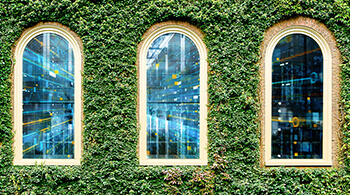The First in a Series on Upgrading University Communication Technology
 The biggest technological advancement in the college classroom of the 20th century was the transition from the chalk board to the white board. It is safe to say that in the first two decades of the 21st century technology has raced ahead of what universities were set up for. The rapidly evolving technological innovations of the 21st century are compelling universities to invest in their communications infrastructure, so they can keep up with what their current needs are and project what their continually changing needs may be a decade or more down the road. This allows them to upgrade their infrastructure for the longer term and anticipate the present and future needs of faculty, staff and students.
The biggest technological advancement in the college classroom of the 20th century was the transition from the chalk board to the white board. It is safe to say that in the first two decades of the 21st century technology has raced ahead of what universities were set up for. The rapidly evolving technological innovations of the 21st century are compelling universities to invest in their communications infrastructure, so they can keep up with what their current needs are and project what their continually changing needs may be a decade or more down the road. This allows them to upgrade their infrastructure for the longer term and anticipate the present and future needs of faculty, staff and students.
The centuries-old, ivy-covered buildings of so many universities have classrooms that have not seen significant infrastructure improvements or physical upgrades in decades. These renovations are needed to address the changing styles of teaching and learning that have become the standard for the next generation of college students. Across the nation technology infrastructure renovations are underway at hundreds of colleges and universities as they race to meet the technology requirements of the modern marketplace.
Though the buildings are decades – or centuries – old, the classrooms are being designed for state-of-the-art technology. The most forward-thinking institutions are working to anticipate infrastructure needs that have not yet been identified in order that they can avoid too-frequent, costly and disruptive upgrades. Long-range technology planning is beyond the scope of most over-burdened university I/T departments. Forging a partnership with a communications infrastructure specialist is a key factor in the success of upgrading universities to meet their constantly changing technology and communication needs.
Students entering college now were born in the year 2000. They had devices in their hands in the play pen. They demand constant connectivity and accessibility to wireless networks. Their learning style is also different than previous generations and it relies much more heavily on technology. This is a generation of students who are constantly connected to each other, in both analog and digital channels, and who naturally gravitate to group work. They need classrooms that can be fluid in their configuration so that faculty can use it in new and traditional ways. The classroom also needs to be able to support collaboration among students and support the sharing of content wherever instructors and learners are located. These classrooms need to be equipped with tools that allow the instructor to wirelessly broadcast content to any device in the room and to customize a display with content from multiple sources.
From the university perspective, connectivity is a key requirement, as well. Universities need to be able to send alerts to students regarding health, safety and security and be confident that everyone on the campus is reachable. Managing student data including: their academic records, tuition and financial aid information, schedules and courses required is a key part of a university’s technology requirements. This data must be secure in a world where more technology raises greater security risks.
Including a communications infrastructure specialist on the team will make the many improvements required by universities happen more quickly and with fewer obstacles than laying the burden solely at the feet of IT. A specialist will analyze the infrastructure needs of individual classrooms or departments. They will be able to find weak spots in the wireless network and recommend installation of equipment to mitigate the problem such as bidirectional antennae (BDAs).
KTS builds partnerships with clients. KTS works with architects and construction team members as and extension of your IT department during the design and build phases of renovation projects to ensure that the infrastructure will meet ongoing, growing needs. This allows the opportunity to future-proof classrooms, so they will be equipped for the ongoing changes in technology.
If you are interested in learning more about partnering with KTS to move your university to the competitive cutting edge of communication technology contact us. We are ready to help you in the race to strengthen your infrastructure and anticipate your future needs. KTS: We connect the disconnect.

